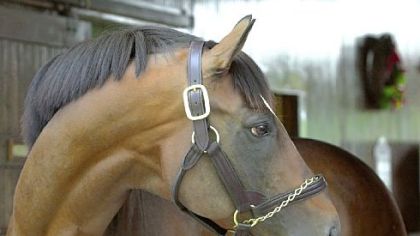
In funding horse racing, the government funds cruelty
Celebrities and pastel-clad patrons paid up to hundreds of thousands of dollars to attend this year’s “Run for the Roses,” enjoying plenty of Woodford Reserve as they watched the bay colt Sovereignty slop through the mud to claim victory in the Kentucky Derby. Tomorrow will see a similar festival at the Belmont Stakes, the third leg of the Triple Crown.
Based on the opulence and grandeur of the Kentucky Derby alone, one might assume horse racing is booming. In reality, the pastime long-known as the “Sport of Kings” is fighting for its life.
The extravagant festivities disguise the sport’s true cost, both to the horses themselves and to the taxpayers.
A sport in decline
American horse racing is undeniably in decline, as evidenced by a 30% decrease in race attendance over the past decade, and a recent drop in betting so severe it is reminiscent of the COVID-19 lull. The number of annual races has been slashed by more than half since 1989, and over 40 US tracks have closed since 2000.
While some of this can be attributed to economic factors, interest in the Sport of Kings has waned as the public has increasingly learned of its dark side.
In recent years, spectators at high-profile races have witnessed horses like Barbaro, Eight Belles, Mongolian Groom and New York Thunder suffer catastrophic, life-ending injuries.
Unfortunately, the problem is more systemic than the tragedies that make headlines. Track deaths in America happen at the average rate of about two per day, totaling over 11,000 horse deaths in the past decade.
Of course there are dangers to humans as well, as illustrated by the tragedy at a Washington county racetrack earlier this year. 27-year-old harness driver Hunter Myers sustained fatal injuries in a multi-horse collision, leaving behind a fiancée and infant son.
The sport is also plagued by unethical training practices, including criminal cruelty and systematic doping. But the moral cost of racing extends far beyond the track.
Nearly 20% of the 20,000 American horses sent to slaughter each year are estimated to be Thoroughbreds who are either ex-racehorses or simply never made the cut in the first place. One deeply troubling study from the Wild for Life Foundation demonstrates that from 2004 to 2010, a shocking average of 70% of the annual Thoroughbred foal crop died at slaughter.
Refusing regulation
While the racehorse industry has taken baby steps to remedy what many stakeholders refer to merely as an “image problem,” it has balked at government intervention, even challenging the congressionally established Horseracing Integrity and Safety Authority, a battle which has gone all the way to the U.S. Supreme Court.
However, some state governments bend over backward to accommodate the racehorse industry’s desperate financial situation, providing billions of dollars in subsidies, sweetheart deals and tax breaks, which are readily accepted. Even the federal government provides tax breaks to racehorse owners.
Pennsylvania is one of the worst offenders, having forked over $3.5 billion for its horse racing endeavors since 2004. Attempts at diverting portions of those funds toward educational scholarships have failed due to political pressure from industry elites.
In fact, the General Assembly passed Act 42 in 2017, which converted the commonwealth’s Race Horse Development Fund into a trust fund, further shielding it from public control.
In New York, race attendance is down 88% since 1978, but the government has spent $3 billion since 2008 to prop up the faltering industry. The approval rate for such subsidies among the state’s residents sits at an abysmal 9%.
Maryland is another example. The state’s tracks have utterly failed to turn a profit, despite receiving $91 million a year in subsidies, with special permission to use the money for track operations as well as purses. Just last year, the state acquired Pimlico, pledging $400 million to the track’s revival.
Kentucky allocates a portion of its pari-mutuel tax revenue to supplement purses, but it also keeps its racing pipeline stocked by using tax dollars to incentivize breeding. Of course, this also incentivizes overbreeding, and the “wastage” produced in the pursuit of the next Triple Crown winner often ends up in the slaughter pipeline.
Government intervention in the market insulates the horse racing industry from feeling the pressure of public concern for animal welfare. Freed of this overreach, the consumer’s capacity for reason and empathy would function as an effective counterbalance against the potential for greed, corruption and exploitation.
Government-funded suffering
For those concerned about animal welfare and wasteful spending, this issue offers an obvious opportunity.
Taxpayer dollars should not be used to buoy failing industries, fund entertainment for an elite segment of the population or enable animal suffering — and certainly should not be used for a sport that fails on all three points.
To end the suffering of racehorses, we must first end government subsidies for its perpetrators.
Meghan Miller is a senior fellow at the Wilberforce Institute.
